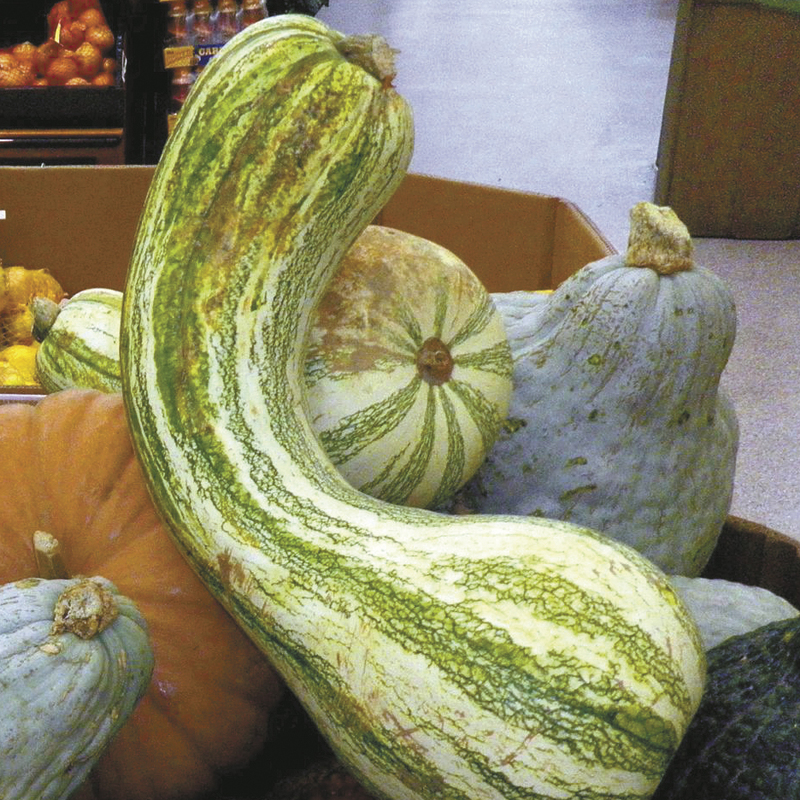Among Native American tribes is one whose very definition of being a member is “one who is mannered, civilized, peaceable, polite.” They call themselves Hopituh Shi-nu-mu (“The Peaceful People” or “Peaceful Little Ones”) but often go simply by “Hopi.”
The concept of being a Hopi extends to a state of total reverence and respect for all things, including the earth. The Hopi have been outstanding farmers for centuries.
Among their crops is a type of squash almost unknown today, the cushaw (Cucurbita mixta). These squash look for all the world like giant green and white striped bowling pins.
The green-striped cushaw is a pear-shaped squash that is usually used fully ripe as a winter squash, but can be eaten when very young as a summer squash. Originally from tropical America, this ancient squash was domesticated between 7000 and 3000 BC.
Fully grown green-striped cushaws are anywhere from 12 to 18 inches long, and weigh 10 to 20 pounds.
The lower bowl part of the squash is often 10 inches in diameter. Its light yellow flesh is just slightly sweet and very mild-flavored with an agreeable hint of smokiness.
This rich flavor goes well with turkey, pheasant and venison. Cushaws are also the favorite pumpkin pie filling throughout the South.
The nutritious seeds are toasted then ground into flour or eaten whole. The squash blossoms can be pan fried in olive oil with onions or stuffed with rice and meat. In addition to “pumpkin pie” and baked goods such as cushaw muffins, cushaw brownies and cushaw cakes, they can be made into dairy products such as cushaw yogurt, cushaw puddings and even cushaw ice cream. Leftover squash is a vitamin-rich fodder for livestock, including sheep and chickens.
Over centuries this squash has been selected to thrive in the very hot and dry Southwest. The long, strong vines are also resistant to the squash vine borer.
There is also an all-white cushaw, Jonathan, an heirloom from 1891. Jonathan cushaw’s pure white skin makes this a novel addition to any fall display. It is also very tasty, with typical cushaw sweet, pale yellow-orange flesh.
Unfortunately cushaws are not widely grown, with very few commercial suppliers, so you will just have to grow your own. Seeds are available at local garden seed racks or online suppliers such as Seed Savers Exchange (www.seedsavers.org) or Baker Creek (www.rareseeds.com).
Plant cushaws after all danger of frost has passed, and the soil has warmed up. They do best in fertile, well-drained soil with a pH of 5.5 to 6.8.
Pick the young, tender squashes to use like any summer squash or let the fruits fully mature to use as a winter squash. Once the skin is too tough to cut with your fingernail, harvest them and let them cure in a cool, dark place.
Plant cushaw this year and you will have giant bowling pins to decorate with, rich squash to mash with butter, cushaw pumpkin seeds to munch, and pumpkin pie like the best Southern cook. More importantly you will be keeping alive a traditional American food that goes back thousands of years. You will be one of the peaceful ones.






















































